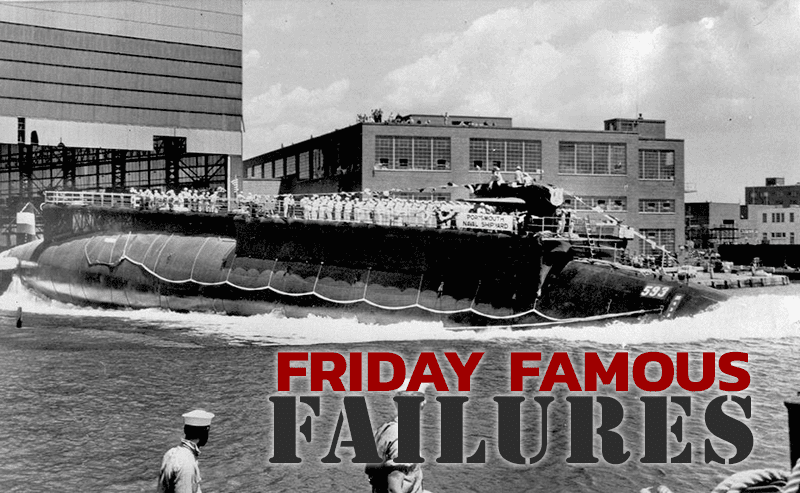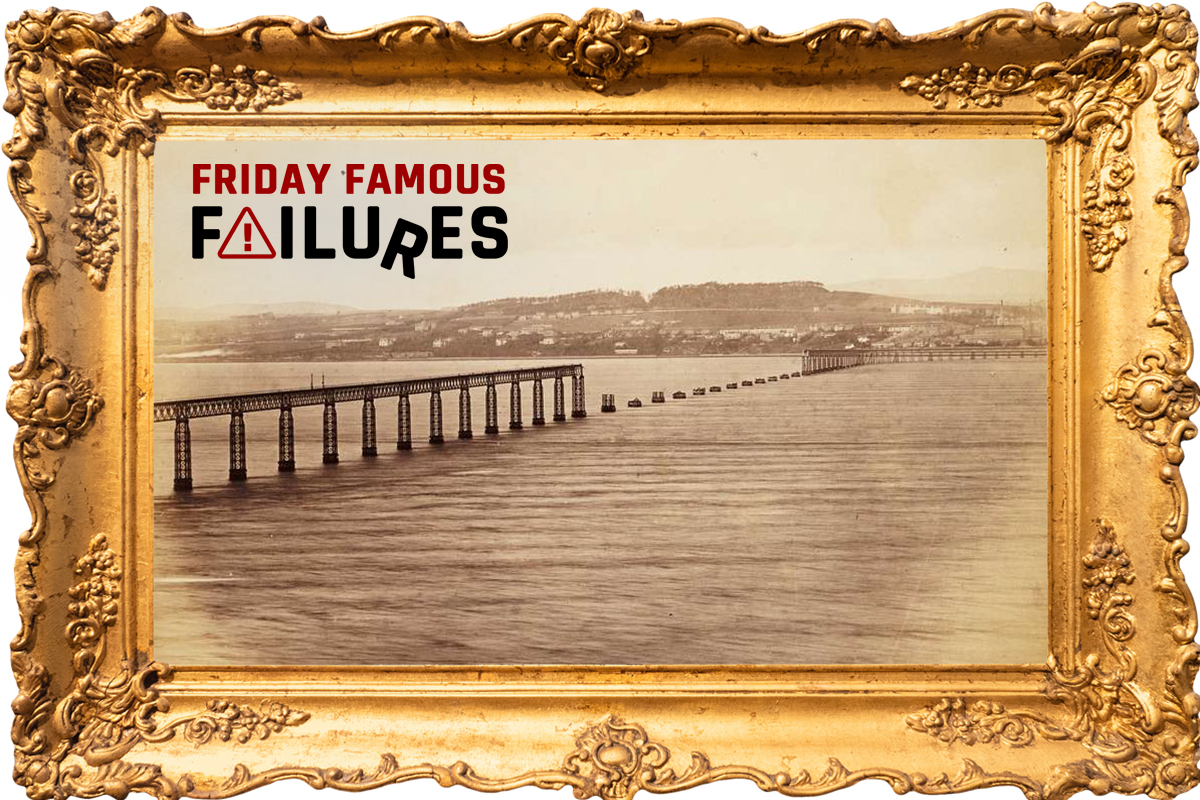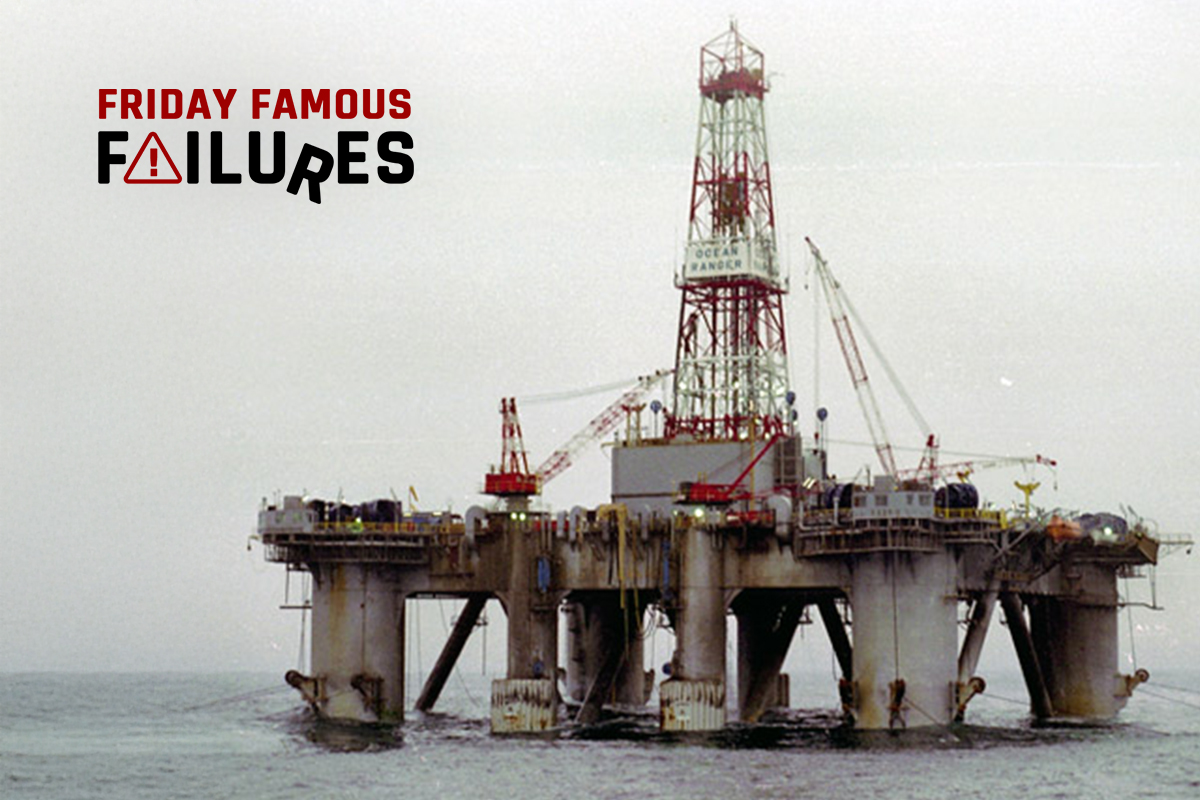The newest and most advanced nuclear submarine of the U.S. Navy at the time, the USS Thresher, was continuing with sea trials on April 10, 1963. After commencing a scheduled dive to test depth, the Thresher reported “minor difficulties” to its escort. Shortly after that, sonar recorded the sounds of a submarine being crushed by excessive water pressure. The next day, the U.S. Navy declared the Thresher lost at sea, resulting in the deaths of all 129 crew and shipyard personnel aboard.
Timeline of the Disaster
April 9, 1963:
The Thresher departs drydock for sea trials, which had been delayed by almost a year following repairs and upgrades necessitated by deficiencies found during earlier tests. The USS Skylark, a surface vessel, accompanied the Thresher to monitor the trials. The first test was a shallow dive to verify hull integrity, which was completed without any concerns.
April 10, 1963:
- 7:45 AM: The Thresher contacts Skylark, the escort vessel, with its position. The Skylark, however, was never able to pick up the quieter submarine on its sonar systems.
- 7:47 AM: Thresher notifies Skylark that it will begin its scheduled dive to test depth, which was the maximum designed operating depth of the submarine. This dive test was conducted slowly and painstakingly in order to provide reaction time for the crew if the submarine were to encounter an unsafe situation.
- 9:09 AM: The SOSUS system, a collection of defensive underwater listening stations intended to identify Soviet submarines, records a “disturbance” from the Thresher, which is later thought to be the sounds of an emergency surfacing attempt.
- 9:10 AM: Thresher reports a change in course to the Skylark via underwater telephone.
- 9:11 AM: The SOSUS system records the cessation of the reactor cooling pumps in the Thresher’s nuclear plant. Classified until 2013 due to the fact that the SOSUS system was itself classified, these recordings were not available for initial investigations.
- 9:13 AM: Thresher reports, “Experiencing minor difficulties. Have positive up angle. Am attempting to blow. Will keep you informed.” Both the SOSUS system and the Skylark record the sound of a second emergency surface attempt.
- 9:16 AM: Thresher sends a garbled message which includes the words “test depth.”
- 9:17 AM: Skylark records a second garbled message from Thresher, which includes the words, “nine hundred North.” This was later interpreted as indications that Thresher had exceeded test depth by 900 feet at the time of transmission.
- 9:18 AM: SOSUS and Skylark record the sounds of a submarine implosion, or the hull being crushed by excess pressure.
Causal Factors of the Disaster
Failure of a silver brazed fitting. A possible cause was the failure of a silver brazed fitting. These types of fittings had been the cause of incidents on other submarines before, including the Thresher, and were often rejected for defects during spot checks in the shipyards. The failure of this kind of fitting may have prevented the Thresher from executing an “emergency blow,” evacuating seawater ballast in an emergency attempt to surface, or may have actually caused a leak and flooding.
Main Power Recovery System. Another likely cause of the sinking was the failure of the submarine’s electrical system, which may have been the result of a reactor shutdown or an electrical short due to flooding. Without main power, the submarine would not have had propulsion and could not maintain depth while submerged until main power had been restored. There was no process for rapid restoration of power after a reactor shutdown.
Inadequate High-Pressure Air System. As a new class, Thresher was larger than previous submarines but had the same size high-pressure air system. The system may not have been capable of fully evacuating the ballast tanks of seawater during an “emergency blow.” Also, in subsequent simulations conducted aboard the Thresher’s sister ship, the rapid changes in air pressure in the system caused heat variation and ice crystals to form in the system, which during an “emergency blow” were caught in filters and blocked the airlines, preventing the evacuation of the ballast tanks.
Effects of the Disaster
After the incident, surveys of the seafloor located the wreckage and indicated that the submarine had suffered an implosion from descending far enough that water pressure crushed the hull, rather than an explosion from inside.
Because deficiencies had been found in the quality of silver-brazed fittings on the Thresher and other U.S. submarines—replacing defective fittings had been one of the reasons why the Thresher’s initial sea trials had been delayed nearly a year—the official investigation, or Board of Inquiry, concluded that the submarine had experienced a leak from such a fitting.
A large seawater leak would have flooded the submarine’s internal compartments, creating large negative buoyancy, and almost certainly would have shorted the electrical system, causing a loss of power and loss of propulsion. Even with large negative buoyancy, a submarine making way can still surface by angling upward. Without propulsion and with negative buoyancy, however, the Thresher could not arrest its sink. A loss of power would also have made it impossible to pump water from flooded compartments to maintain buoyancy.
The previous commanding officer of the Thresher disagreed with the Board, arguing that a seawater leak would not have been described as a “minor difficulty.” Naval damage control manuals characterize leaks resulting in flooding as a serious issue, and Thresher would have described the situation that way if it was being flooded. He suggested that a reactor SCRAM aboard the submarine, in which reactor control rods are rapidly inserted into the core to stop fission, would have been classified as a “minor difficulty” and may have caused a loss of propulsion. This would make the cause of the incident a loss of power, not flooding due to a bad fitting.
Recordings made by the SOSUS system, which were only declassified later, support the “loss of power” theory. These recordings indicate that the reactor coolant pumps apparently shut off at 9:11 AM, which would have prompted an automatic SCRAM event to avoid reactor meltdown. Then, two minutes after the reactor pumps stopped, the Thresher reported “minor difficulties” and “positive up angle.” It is possible that the submarine was negatively buoyant when the reactor pumps stopped, and that depth was being maintained by forward propulsion and the action of the diving planes. In that case, the submarine would have sunk when propulsion stopped without any leak or flooding.
Overall, the Board of Inquiry identified 11 design and procedural flaws in the building and operating of nuclear submarines. These mostly focused around quality control in design. The Chief of Naval Reactors also responded to the incident, tasking a committee to create a procedure for rapid restoration of main power.
In response to the Board of Inquiry, the U.S. Navy Submarine Command developed the SubSafe program, which launched significant design changes and requirements for all phases of submarine engineering, including the upgrade of existing vessels. Furthermore, “reactor fast recovery” training is conducted for all submarine-qualified crewmembers and is the subject of specific procedures on every class of U.S. Navy submarine. Since the sinking of the Thresher, and the advent of the SubSafe program, no SubSafe qualified U.S. Navy submarine has been lost at sea.









What about the loss of the Scorpion in 1968?
I read about Thresher’s story in National Geographic several months after it happened. Included pictures of wreckage on sea floor. Tragic loss of life.
Words can’t describe the nightmare of sinking beyond test depth and the inability to blow ballast. Submariners asked me why I wanted to be a “target” on a surface ship in the Navy. I replied “Thresher.”
As a submariner I especially feel the loss of my brothers on those boats. They would have done everything possible to save those ships. However, their sacrifices were not in vain, since we have learned so much from those tragedies. Building submarines is as much of an art as it is technical expertise, and much like our space program we must do everything possible to keep those skilled trades in practice. Great article, thank you.
Scorpion deployed without having completed SubSafe modifications. They did have an unexplained loss of hydraulic fluid (50 gallons per day) that somehow failed to be a “red flag” in a “can do” era where the CO decided to get underway despite a gross, ongoing issue. There is a book out there titled “Silent Steel” that everyone interested in Scorpion should read.
The article left out the most important reason why the Thresher could not surface …it was hinted at in the article…(i.e. ICE CRYSTALS) The pneumatic system had excessive moisture in it (TOO HIGH A DEW POINT)…when the air went through the minimum restriction area to expel the ballast, the air temperature dropped below the dew point of the air. This caused condensation at the minimum restriction area and eventually the condensate froze –the ice that formed then blocked the flow of air and the Thresher could not discharge the ballast.
I would have been on the Thresher if I had accepted a position at the U.S. Navy Underwater Sound Lab in New London, CT when I graduated College in 1961 – I would have been going on sea trials at the U.S. Navy Underwater Sound Lab. Of the 129 who perished on the Thresher – 5 were civilian workers employed by the U.S. Navy Underwater Sound Lab in New London, CT.